Driving the Taihu Lake Lake in Wuzhong, Suzhou, you can enjoy the beautiful scenery in two days
Write before
There is heaven above, and Suzhou and Hangzhou below.
Suzhou is not only the world of gardens, but also the scenery of the Taihu Lake Lake in Wuzhong. In addition to enjoying all kinds of Jiangnan gardens, you can also climb mountains and play with water near the Taihu Lake Lake and eat special food such as the Taihu Lake Lake Sanbai. Yuantouzhu, which has been to Wuxi, is part of the Taihu Lake Lake, while the Taihu Lake Lake in Wuzhong, Suzhou is the first time to visit. On the two days we went, white clouds blossomed in the sky, leisurely basking in the sun, adding light and color to our recent mountain and water adventures.



About the Taihu Lake Lake in Wuzhong
The Taihu Lake Lake Scenic Spot in Wuzhong, Suzhou is located on the shore of the Taihu Lake Lake in the southwest corner of Suzhou. Taking the Taihu Lake Lake as the main line, there are eight scenic spots, including the Taihu Lake Lake Ancient Town, the Taihu Lake Lake Hills, the Taihu Lake Lake Natural Villages and so on, including Dongshan Scenic Spot, the "hometown of Biluochun in China", Qionglong Mountain Scenic Spot, the "No.1 Smart Mountain in the World", Wangshan Scenic Spot, the "most beautiful mountain village in Suzhou", the Taihu Lake Lake National Wetland Park, and the surrounding the Taihu Lake Lake Park, Xishan Scenic Spot, Guangfu Scenic Spot. This time, we mainly went to the Taihu Lake Lake Xintiandi, Linwu Ancient Cave, Yuyang Mountain, Qionglong The mountain scenic spot, as well as several places in Mudu Ancient Town, also received many beautiful pictures.



scheduling
D1 Hangzhou -- Suzhou -- Wuzhong the Taihu Lake -- the Taihu Lake Xintiandi -- Linwu Ancient Cave -- the Taihu Lake Holiday Inn Suzhou
D2 Holiday Inn the Taihu Lake Lake Suzhou -- Qionglong Mountain Scenic Area -- Lunch -- Mudu Ancient Town -- Return
This trip can be said to be very leisurely, not a weekend trip. There aren't many cars on the road here, and there aren't many people in the scenic area. I think it's very good. I asked the people in the scenic area and they said that there will be more people on weekends, so this place is quite suitable for spending good time outside of the weekend. Climbing the mountains to see the ancient village, and on the way, I also saw the half horse race track with a blue track. It looks very beautiful when people take pictures of the road, and from a god's perspective, it is also stunning. I also saw a beautiful sunset near the Taihu Lake Lake.


The Taihu Lake Xintiandi

The first stop here is the Taihu Lake Xintiandi, located between the Taihu Lake Lake National Tourism Resort Landscape Avenue Wetland Park and Mercury Yacht Club, covering an area of 118 mu, including 75000 square meters of green space. After taking a step in, the refreshing Hu Feng brushed his face. Although the sun was still bright, he didn't feel hot. In front of him was a blue wave, and as he walked, he arrived at the restaurant inside.




In addition to walking on a wooden boardwalk, you can also choose to take a boat here. It takes more than ten minutes by water from the East Pier to the West Pier. The boat shuttles through the reed marshes, watching the wind blow the reeds in the same direction, as if people are constantly waving forward.


When the ship sailed into the open area of water, the iconic windmill could be seen from afar. At first glance, I thought it was a water wheel, but it was corrected. That was a windmill, but it hadn't been spinning for a long time. Upon closer inspection, I realized that there was still a part of this giant windmill standing steadily in the water.





The Taihu Lake Xintiandi covers a large area. You can also rent a courtesy bike or mountain bike at the entrance to ride around the lake. Mountain bikes cost 20 yuan/h, sightseeing bikes cost 10 yuan/person per trip.




Yuyang Mountain

Yuyang Mountain is located on the shore of the Taihu Lake Lake. The environment is quiet and pleasant. Climbing high and looking far, you can have a panoramic view of the beautiful the Taihu Lake Lake. It is beautiful and spectacular with ripples and mountains. The historical and cultural resources of the ancient Wu state in Yuyang Mountain are extremely rich, and many literary officials and military generals have left behind many poems, paintings, and legends of war relics here. The mountain is not high, but there is a fairy. The shape of Yuyang Mountain is very similar to the most auspicious Ao God in China. Its special geographical location and rich history and culture endow Yuyang Mountain with spirituality, making it a treasure mountain beside the Taihu Lake Lake in Wuzhong.

The name of Yuyang Mountain comes from the story of Wu Zixu giving the mountain to repay his kindness. After Wu Zixu led his army to defeat the strong Chu, dug up the tomb and whipped the corpse of King Ping of Chu, and avenged him with blood and sea, he found the descendants of the old fisherman who had saved his life and brought them back to the state of Wu. Later, they found the feng shui treasure land closest to the palace and properly placed them, naming it Yuyang Mountain. The life-saving kindness of the old fisherman is like the vast ocean, never to be forgotten in his lifetime.



Yuyang Mountain can choose to go up on foot or take a battery car. After reaching the top of the mountain, you can choose a cableway to go down. When we went there, the cableway did not seem to open because there were fewer tourists. The Yuyang Pavilion on the top of the mountain is the highest point here, and you can see the whole picture of the Taihu Lake Lake. Because Yuyang Mountain is located in the central area of the Taihu Lake Lake in Suzhou, facing the lake on three sides, connecting Xukou Ancient Town on the east, Guangfu Deng Wei, Xuanmu, Xiaogong Mountain and Xiaogong Mountain on the north, looking east Dongting Mountain on the south, and west Dongting Mountain on the west. The the Taihu Lake Lake Bridge is like a rainbow lying on the waves, connecting Xishan, Yeshan, and Changsha islands. Looking up, it is indeed a vast expanse of mist and towering mountains, breathtaking!



One of the iconic buildings in the Yuyang Mountain Scenic Area, the Yuyang Pavilion, has been completed. The total height of Yuyang Pavilion is 27.1 meters, and the overall architectural shape is similar to the shape of a dragon turtle carrying a pagoda, just like the terrain of Yuyang Mountain, very similar to the Ao God, with the intention of dominating the Ao. The Yuyang Pavilion is divided into five layers. Themed respectively by Ao Culture (No. 1 Scholar Culture), poetry and painting of the Taihu Lake Lake, tracing of the fishing ocean, praying for blessings with jade bells, it refines the essence of Wu Culture, the Taihu Lake Lake Culture, and Yuyang Mountain Culture. Taking the form of local traditional art in Suzhou, it presents to the world a picture of the Taihu Lake Lake with beautiful scenery, rich products, poetic and picturesque atmosphere, and humanistic atmosphere.

As a landmark building of Yuyang Mountain, each floor of Yuyang Pavilion is decorated with a unique cultural value piece, with the first floor featuring a statue of the Jade Ao deity and the Golden Jade Treading Ao Guanyin; The third floor is the largest lacquer carving painting in China, the "Two Mountains in Dongting" painting; The fourth floor is the largest porcelain panel painting "Fishery Poetry" and nine traditional stone carvings "Legend of Fishery Mountain" fired in Jingdezhen to date; The five story Golden and Jade Bell Tower, adorned with gold ornaments and jade shops, brings auspiciousness, safety, and health to people amidst the sound of auspicious bells.





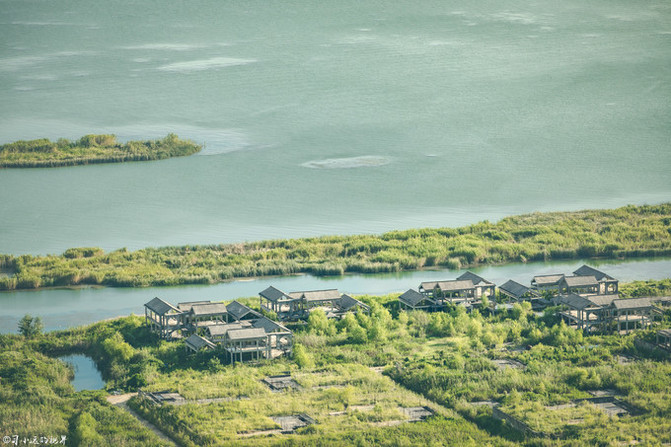
admission ticket
Adult (ticket, sightseeing bus one-way, cable car) 130 yuan
Parent child discount ticket (two large and one small) 375 yuan
Parent child discount ticket (two large and one small) 225 yuan
1. Opening hours: 8:00-17:00
2. Ticket collection location: Ticket office in the scenic area
3. Special population: A. Free policy: Free ticket for those under 1.2 meters; Elderly people over 70 years old are exempt from tickets with an elderly certificate; Military officers and disabled individuals are exempt from tickets with valid identification documents.
B. Preferential policy: Half price ticket for heights between 1.2 meters and 1.4 meters.
traffic
Suzhou citizens can take bus No. 58, 69, Mudu to Jinting No. 691 at Yuyang Mountain Scenic Area, and get off at the Taihu Lake Pearl Resort or Yuyang Park


The Ninth Cave in the World - Linwu Ancient Cave
Lin Wu Dong, the first time I came here, when I first heard this name, my mind was thinking about what kind of hole Lin Wu Dong is. I only realized when I walked in that there was really a different world.

The Linwu Ancient Cave is located in the northeast of Jinting Town (formerly Xishan Town), in the western part of Linwu. There are ten major caves in the world, with the Lin Wu Cave being the ninth cave, one known as the "Left God's Dark and Void Heaven" and the other as the "Heavenly Palace". It is said that in ancient times, there were dragons living in the cave, so the cave body is like a dragon, also known as the "Dragon Cave". The Mount Linwu, also known as the Longdong Mountain, is a famous scenic spot in Xishan Scenic Area, a national key scenic spot of the Taihu Lake Lake.

The Lin Wu Cave faces west and has two openings on the front side. The stone walls of the cave gate are engraved with words such as "The Ninth Cave in the World" (in regular script), "Linwu Ancient Cave" (in clerical script), "The Ninth Cave" (in small seal script), "Rain Cave" (in cursive script), "Immortal Mansion" (in official script), as well as the famous calligrapher Yu Yue from Suzhou during the Qing Dynasty who wrote "Lingwei Zhangren obtained the Su Shu Chu of Dayu" (in seal script).





The Lin Wu Cave is warm in winter and cool in summer. Outside the cave, when the temperature reaches over 30 degrees Celsius in summer, the cave is as cool as autumn, making it a great place to escape the heat. There are countless strange rocks and scenery, winding around and staggered in height. The top of the cave may be flat like a rock, or the stone breasts may hang upside down. The bottom of the cave is rough and rugged, with stalagmites, stone beams, stone beds, stone tables, stone chairs, stone stoves, stone beasts, and so on. On both sides, there are alternating concave and convex shapes, with exquisite hollows and visible cracks and horizontal holes everywhere. After visiting the Linwu Ancient Cave, Tang Dynasty poet Pi Rixiu wrote a poem praising, "The golden hall seems to have been cast, and the jade seat is carved," vividly depicting this "immortal cave.".

The Linwu Ancient Cave is also the filming location for the TV series "Water Moon Cave", and the interior of the cave looks very beautiful under the lighting. When there are shortcomings, many electrical wires and water pipes can be seen exposed outside.






Half horse race track running and watching sunset in the Taihu Lake Lake
The first day of the trip came to an end, and it was also at sunset in the evening. The car was driving on the road by the lake, with very few cars on the road. I parked my car on the side of the road and quietly watched the sunset turn the sky red. The lake surface was slightly wrinkled under the wind. I flew the small plane with great interest and saw the beautiful avenue around the lake. The asphalt road extended into the distance, with blue runways on both sides and occasional passing vehicles.

It is said that this is the half horse race track on October 20th. Registering to participate in the half horse race can enjoy discounts from surrounding scenic spots. Running here is not just a pleasure, constantly exhausting energy while enjoying the scenery of the lake and mountains with your eyes.






The setting sun of the Taihu Lake Lake can be said to be very beautiful. I also saw a couple taking wedding photos here.


The Number One Wisdom Mountain in the World - Qionglong Mountain
Suzhou Qionglong Mountain Scenic Area is located in the western part of Gusu and is the top mountain in Suzhou. Its main peak, Ruomao Peak, has an altitude of 341.7 meters and is known as the "peak of Wuzhong". This mountain is majestic, with a wide area, lush pine and bamboo trees, beautiful mountain scenery, like entering a fairyland, with a long history. It is the birthplace of Sun Tzu's Art of War and the site of Emperor Qianlong's six prayers. The cultural landscape is rich, integrating politics, military, religion, and culture into one mountain. The main attractions include: Wanghu Garden, Sunwu Garden Thatched Cottage, Playing Platform, Sunwu Academy, Qianlong Imperial Road, Ningbang Temple, Shangzhen Temple, Yuhu, and Dongtian.




Upon entering the scenic area, I saw a small pink pig all the way up, and even walked up to see a lazy cat sunbathing in the grass.


There are three peaks in Qionglong Mountain, namely Damao Peak, Ermao Peak, and Sanmao Peak. The main peak, Damao Peak, has an altitude of 341.7 meters and is known as the "peak of Wuzhong". For the Suzhou area with an average altitude of only 3.5 to 5 meters, Qionglong Mountain can be said to be a unique advantage. This is also the best place to overlook New Suzhou.




The pavilions and towers on the mountaintop of the scenic area also have their own unique features. In addition, the weather is good, and every window that receives sunlight is covered with white clouds and green trees, leaving their own shadows on the ground. It is also a great weather for taking photos.
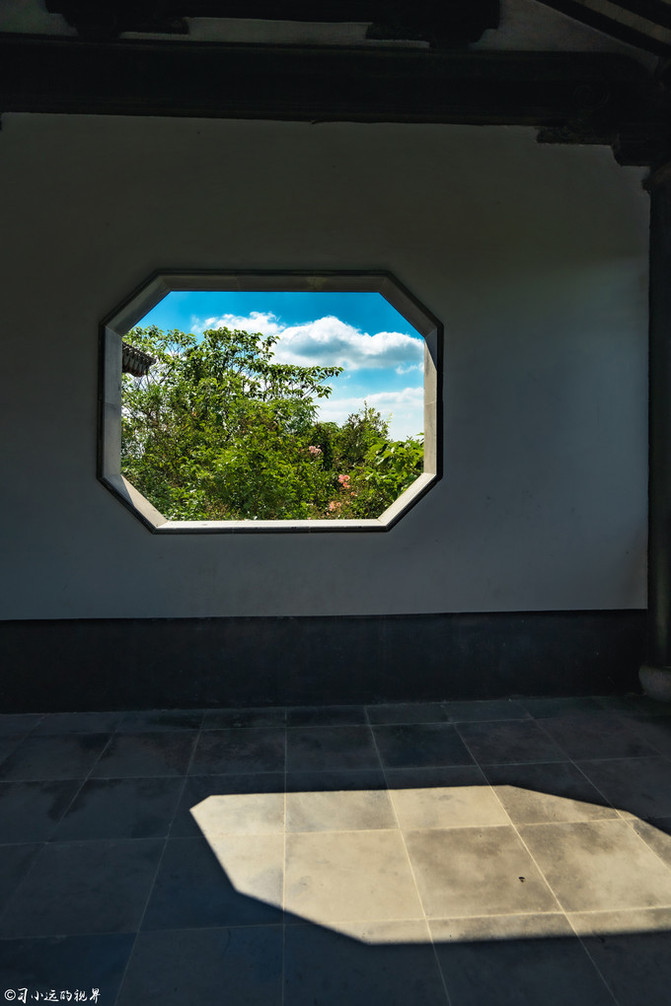




Shangzhen Temple: Located on Sanmao Peak, Shangzhen Temple faces the ancient city of Suzhou, backed by Xiaowang Mountain, adjacent to the famous Buddhist mountain Lingyan Mountain to the east, and adjacent to various scenic spots such as Xiangshan Taohua Ridge, Baima Ridge, Lanke Mountain, Dayuanlin, and Xiaoyuanling to the south. The peaks and ridges are continuous and undulating, like a rolling dragon, with a majestic momentum.



The Art of War by Sun Tzu is renowned worldwide and has shown the wisdom of the Chinese people to the world. And the ancient great military strategist Sun Tzu, who lived in seclusion on Qionglong Mountain, wrote the first military book in Chinese history, "Thirteen Chapters of Sun Tzu's Art of War.". Emperor Qianlong of the Qing Dynasty visited the mountains six times, leaving behind countless little-known anecdotes; Zhu Maichen, a minister of the Western Han Dynasty, once chopped firewood and studied here; Han Shizhong, a famous anti Jin general, gathered with his subordinates at Qionglong Mountain to admire the moon... Thanks to over 2000 years of cultural nourishment, Qionglong Mountain is known as the "Number One Wisdom Mountain in the World".

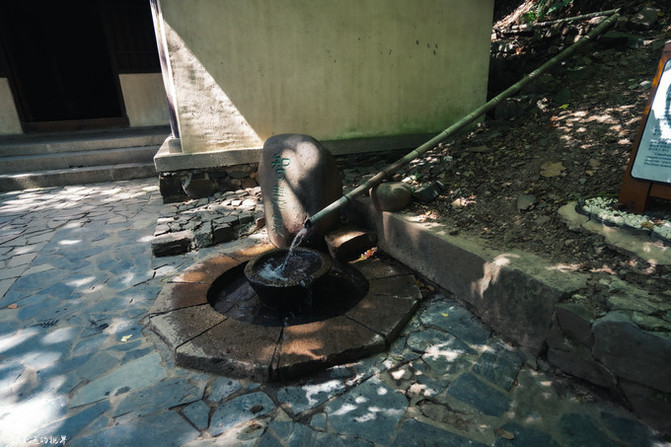
In Sun Wuyuan, there are inscriptions in different languages on Sun Tzu's Art of War, as well as inscriptions from several generals.



admission ticket:
Ticket: 80 yuan
Qionglong Mountain+sightseeing bus: 100 yuan
A. Free policy: Children under 6 years old (including 6 years old) or under 1.4 meters tall (including 1.4 meters) are eligible for free admission to the kindergarten; Disabled individuals and elderly people over 70 years old can enter the park without a ticket with a valid ID card.
B. Preferential policies: Minors aged 6 (excluding 6) to 18 (including 18), full-time undergraduate and below students, and elderly people aged 60 (including 60) to 69 can purchase scenic spot discount tickets with valid documents.
Opening Hours:
8:00—16:30
Transportation Overview:
Self driving:
1. The self driving route from Suzhou to Qionglong Mountain:
Both Provincial Highway 209 and Suzhou Raocheng Expressway can directly reach the scenic area
2. Self driving route from Shanghai to Qionglong Mountain:
Shanghai Nanjing Expressway - Dongqiao Hub - Ring Expressway - Sufu Highway - Entrance to Scenic Area
3. The self driving route from Nanjing to Qionglong Mountain:
Ninghu Expressway - Dongqiao Hub - Ring Expressway - Sufu Highway - Entrance to Scenic Area
4. The self driving route from Zhejiang to Qionglong Mountain:
Sujiahang - Yinshan Hub - Ring Expressway - Sufu Highway - Entrance to Scenic Area
Public transportation:
Bus → Qionglong Mountain
Take bus 43 (from Wuzhong Bus Station to Zhenhu Bus Station) and bus 64 (from Su'an First and Last Station to Guangfu) and get off at the "Qionglongshan National Forest Park" station

Mudu Ancient Town
There are also many ancient towns that have been visited, and now the popularity of ancient towns always attracts many tourists. It goes without saying that Wuzhen in Xitang is no exception, and Mudu Ancient Town is no exception. Just looking at the cars in the parking lot can tell. Entering the ancient town, I felt that it was very popular. There were numerous shops along the street, and next to the street was a river that crossed the town. A stone bridge was built on the river, connecting the two banks, and occasionally boats swayed and swayed past.



Mudu Ancient Town, also known as Duchuan and Xujiang, is also known as Xiangxi. It is located in the southeast of Jiangsu Province, in the west of the ancient city of Suzhou, and in the the Taihu Lake Lake basin. It is a famous scenic spot in the south of the Yangtze River, known as "the first town in Wuzhong" and "the most beautiful town in the south of the Yangtze River". Mudu Ancient Town is a Han ethnic water town cultural ancient town of the same age as Suzhou City, with a history of over 2500 years.
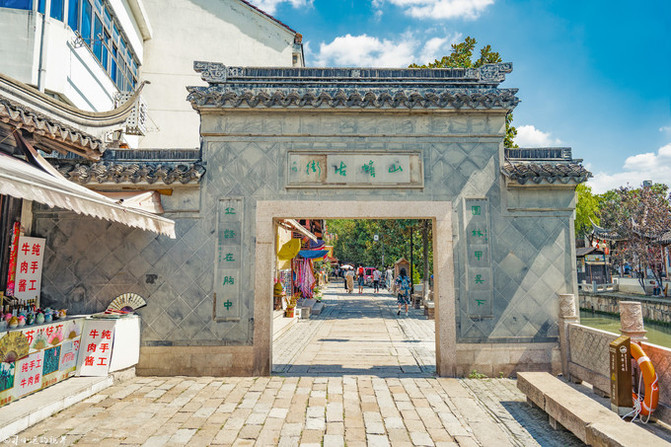


Mudu is known as the "Town of Gardens". During the Ming and Qing dynasties, there were over 20 private gardens in the town. Today, there are still many classical gardens such as Yan Family Garden, Bangyan Mansion, Hongyin Mountain House, and Gusong Garden. The old streets of the town are crisscrossing, with Shantang, Xiatang, Xiasha, and Zhongshi Streets that have gone through many vicissitudes and still retain their charm.
The old streets and alleys are filled with deep houses and large courtyards. These ancient buildings are spacious, well preserved, and have high cultural and artistic value. Among them, the Double Flower Basket Hall in the mansion of modern philosopher Feng Guifen and the old house of Cai Shaoyu, one of the "Four Rich Men" in Mudu, are the most typical (Qing Dynasty architecture). The history of Xujiang, perfume Creek and Caixiangjing in the ancient town can be traced back to the Spring and Autumn Period of Wuyue.



The town is crisscrossed by rivers such as the Muguang River, with small bridges flowing and a quaint and tranquil scenery. Wangjia Bridge, Xiqiao Bridge, Zhuxiang Bridge, Hongqiao Bridge, Xi'an Bridge, Langqiao Bridge, Yong'an Bridge, Xijin Bridge and other ancient bridges over the river have undergone several renovations, while others have survived numerous disasters. Together with the continuous stone embankments, they form the ancient water scenery.
There are numerous ancient trees in the town, also known as "living fossils". There are 500 year old Luohansong, 200 year old Magnolia grandiflora and Ginkgo biloba, which are weathered and full of vitality.
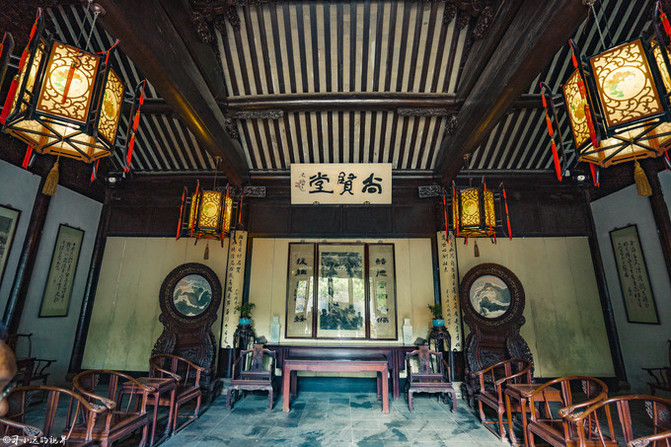





The ancient town of Mudu has a profound historical and cultural heritage, with the former "Ten Scenic Spots" that were famous for a time. Today, there are still various scenes such as "Xiqiao Fenshui", "Hongqiao Evening Light", "Xiasha Luoyan", "Jiangtan Fishing Fire", "Xijin Watching the Moon", "Lingyan Evening Bell", and "Nanshan Clear Snow", and their lingering charm can still be seen. In the middle of the Qing Dynasty, Mudu was already a famous commercial port in Wuzhong. During Kangxi's three southern patrols and Qianlong's six visits to Jiangnan, he favored Mudu each time.
There are many celebrities here. From the eighth year of the Xiangfu reign of the Dazhong reign of the Song Dynasty (1015 AD) to the end of the Qing Dynasty, more than 20 jinshi and 27 juren were produced. Famous figures include Fan Zhongyan, Lu Zigang, Yang Ji, Wang Wan, Ye Xie, Shen Deqian, Feng Guifen, as well as modern and contemporary Shen Shou, Tang Na, Yan Jiagan, and others. They were either born and raised in Mudu or lived there for a long time, adding a strong humanistic atmosphere to the ancient Mudu.







admission ticket:
Individual tickets for tourist attractions: 20 yuan for Yan Family Garden, 25 yuan for Hongyin Mountain Room, 15 yuan for Gusong Garden, 10 yuan for Bangyan Mansion, 5 yuan for Mingyue Temple, and 5 yuan for Ming and Qing Ancient Porcelain Museum.
Tourist attraction ticket: 60 yuan (including Yanjia Garden, Hongyin Mountain House, Gusong Garden, and Bangyan Mansion)



Transportation:
1. Starting from Suzhou:
Take the tour route 4 or route 502 or 38 to Yanjia Garden at Suzhou Railway Station. The ticket price for tour route 4 or 38 is 2 yuan, and the ticket price for route 502 is 4 yuan; There are buses from Suzhou Wuxian Bus Station to scenic spots such as Dongshan, Xishan, and Guangfu, all passing through Mudu, with a ticket price of 3 yuan; You can also take buses 7, 34, 54, 64, 70, 161, 204, 304, 311, 406, 415, 501, 522, 622, 921, You 1, etc. The journey from the city center to Mudu takes about 20 minutes, and the latest bus return time is 10 pm.

2. Shanghai, Hangzhou, Nanjing for reference:
Shanghai direction: Take a luxury bus directly to Mudu from Shanghai Distribution Center (Gate 2 of Hongkou Football Stadium and Gate 5 of Shanghai 80000 People Stadium), with a journey of 90 minutes. You can also take a train or bus to Suzhou and transfer to a bus directly to Mudu.
Self driving: Get off the Suzhou New Area exit of the Shanghai Nanjing Expressway, take the elevated road, take the West Ring Road elevated road to the exit of Labor Road, take the cable mountain bridge along Zhuyuan Road, and directly reach Mudu.
Hangzhou direction: Take a bus from Hangzhou Distribution Center (Huanglong Sports Center) or Bus East Station to Suzhou, then transfer to the bus and go directly to Mudu; Self driving: Take the Suzhou Jiahang Expressway to the Wuzhong Interchange and transfer to the Suzhou Ring Expressway, then exit at the Xishan Exit and head straight to Mudu.
Nanjing direction: Take a bus from Nanjing Distribution Center (No. 400 Zhongshan South Road) or Long Distance Bus Center (No. 5 Jianning Road) to Suzhou, or take a train to Suzhou and transfer to a bus directly to Mudu.
Self driving: Take the Nanjing Shanghai Expressway to the "Dongqiao" interchange and transfer to the Suzhou Ring Expressway, then exit at the "Guangfu" or "Xishan" exit and directly reach Mudu.
3. Town transportation: The starting price for human sightseeing tricycles in the town is 2 yuan, and the starting price for motor tricycles is 5 yuan. All external vehicles are strictly prohibited from entering the ancient town.



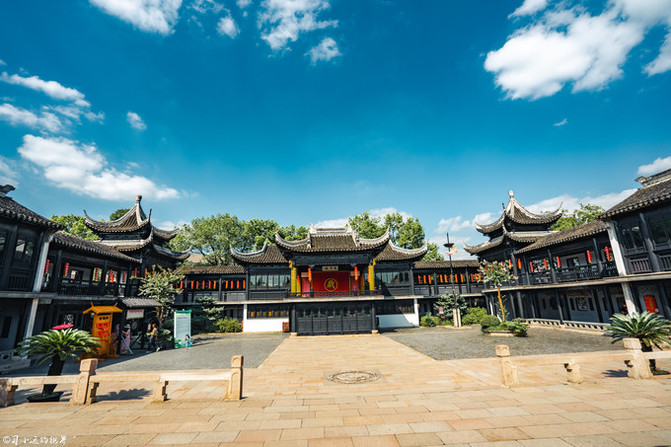







About Eating
The Taihu Lake Lake is more famous for its three whites: white fish, whitebait and white shrimp. They must all come here to eat. In addition, when it was crab last season, hairy crabs should not be missed. After eating several dishes this time, I felt that the dishes from Dongli's family were still very good. The dishes were also delicately arranged, and the owner was very enthusiastic. The portions of the dishes were also sufficient, and fresh fruit juice was provided for us to drink.
Coordinate: Donglou, Nanhefeng Village, Cangxu Road, Xukou Town.
Another popular restaurant on the internet is called Oshima Lake View Restaurant. The overall layout is pretty good, but the dishes are particularly light, which should be the specialty here.
Coordinate: No.10 Xiaomingwan, Suzhou Stone Road This store is very close to Mingyue Bay Ancient Village













About Housing
Suzhou the Taihu Lake Lake Resort Hotel is located near Xintiandi, the Taihu Lake Lake. The location is very convenient and quiet. The overall layout of the hotel is very clean and well-equipped, with a gym and swimming pool. Breakfast is on the third floor, and the room space is quite spacious, making it suitable for travel and living.







Although it is only a short two days, I am still very happy that the weather of these two days is very awesome. The scenery of the Taihu Lake Lake is in the camera and eyes. I look forward to the next more in-depth exploration of the Taihu Lake Lake.
Previous Article:Parent child tour: Take your daughter to Jiangnan in poetry and visit the most beautiful water town of Zhouzhuang
Next Article:The world's fireworks and books are endless, and Gusu Dongshan enters Jiangnan
